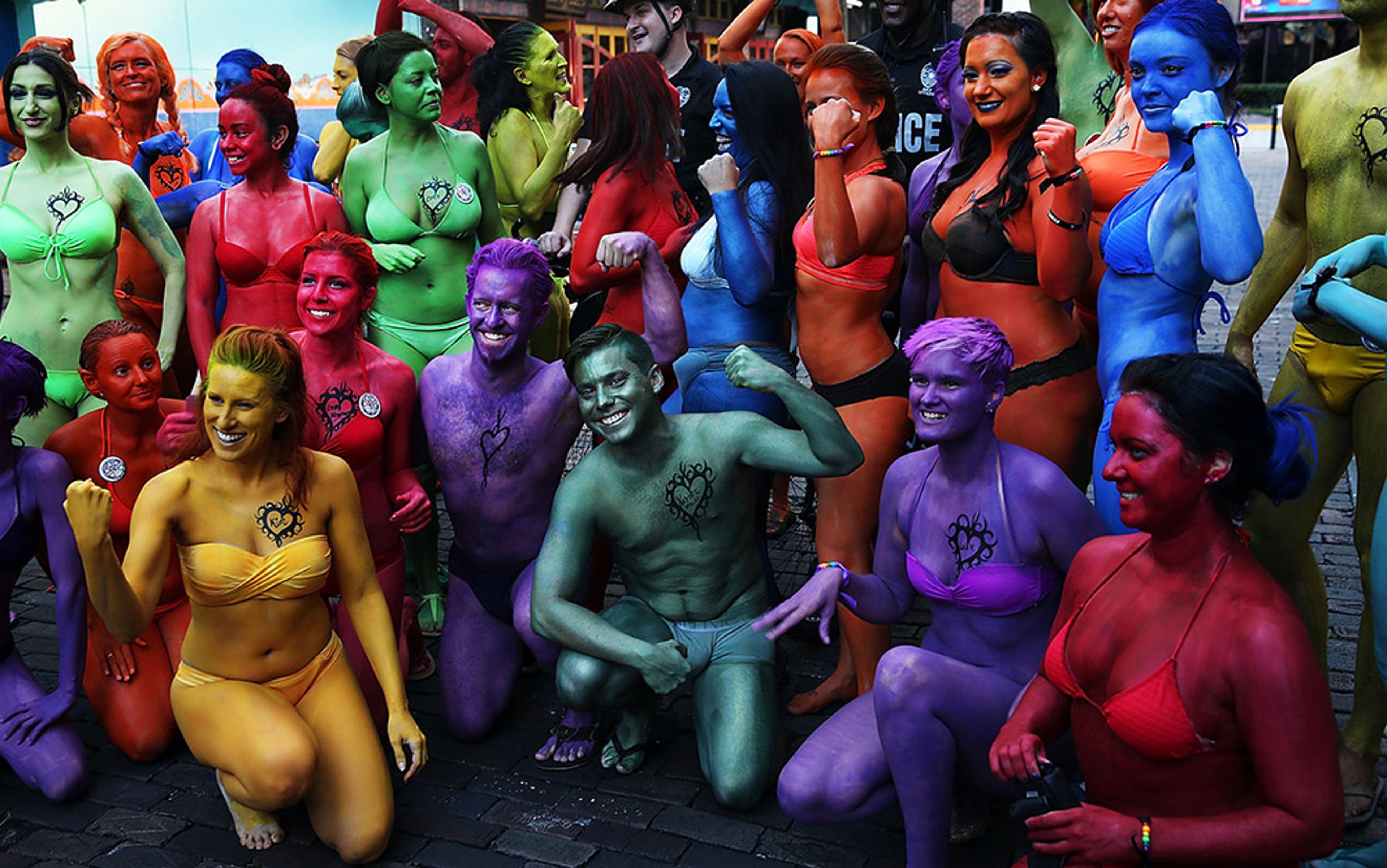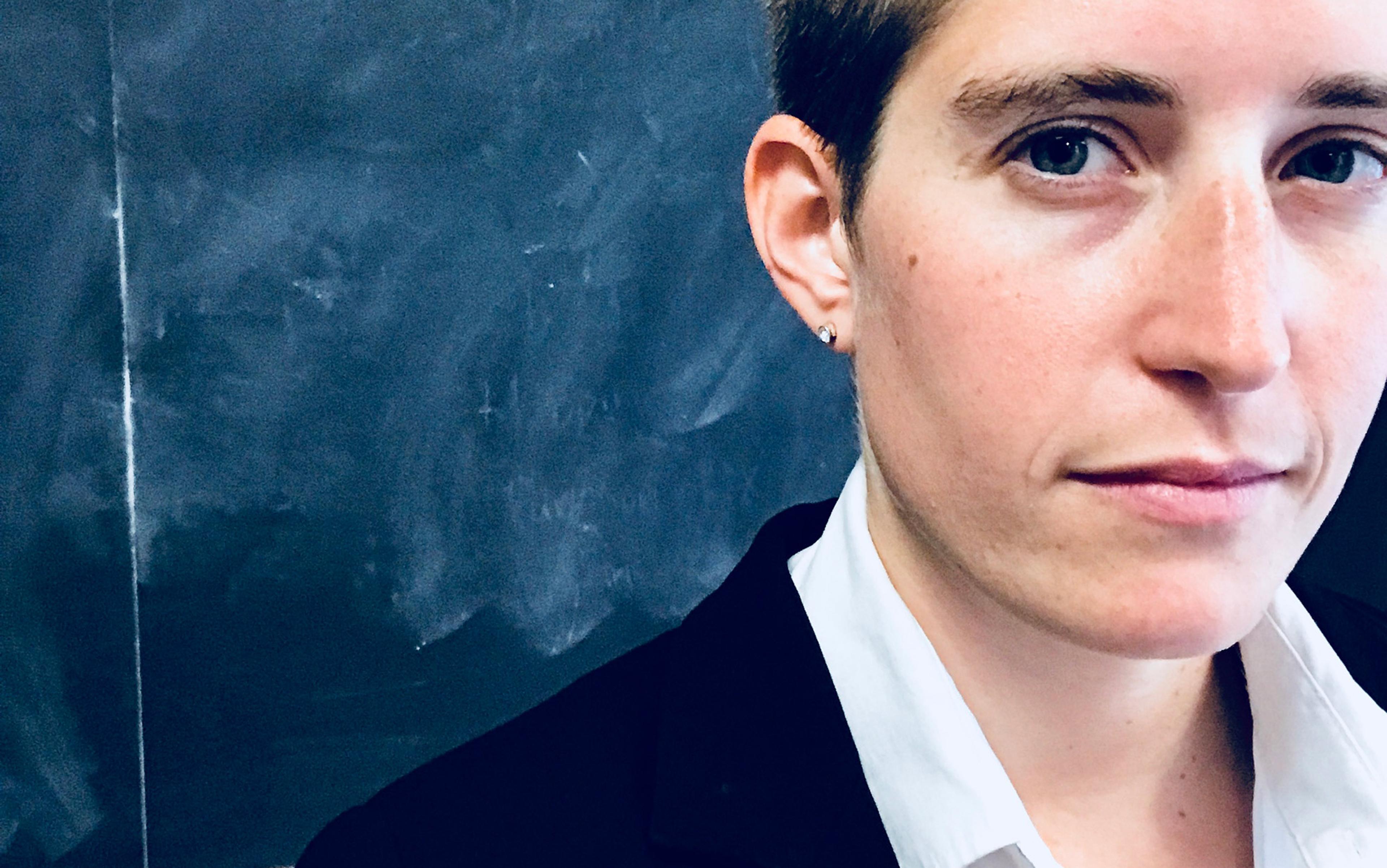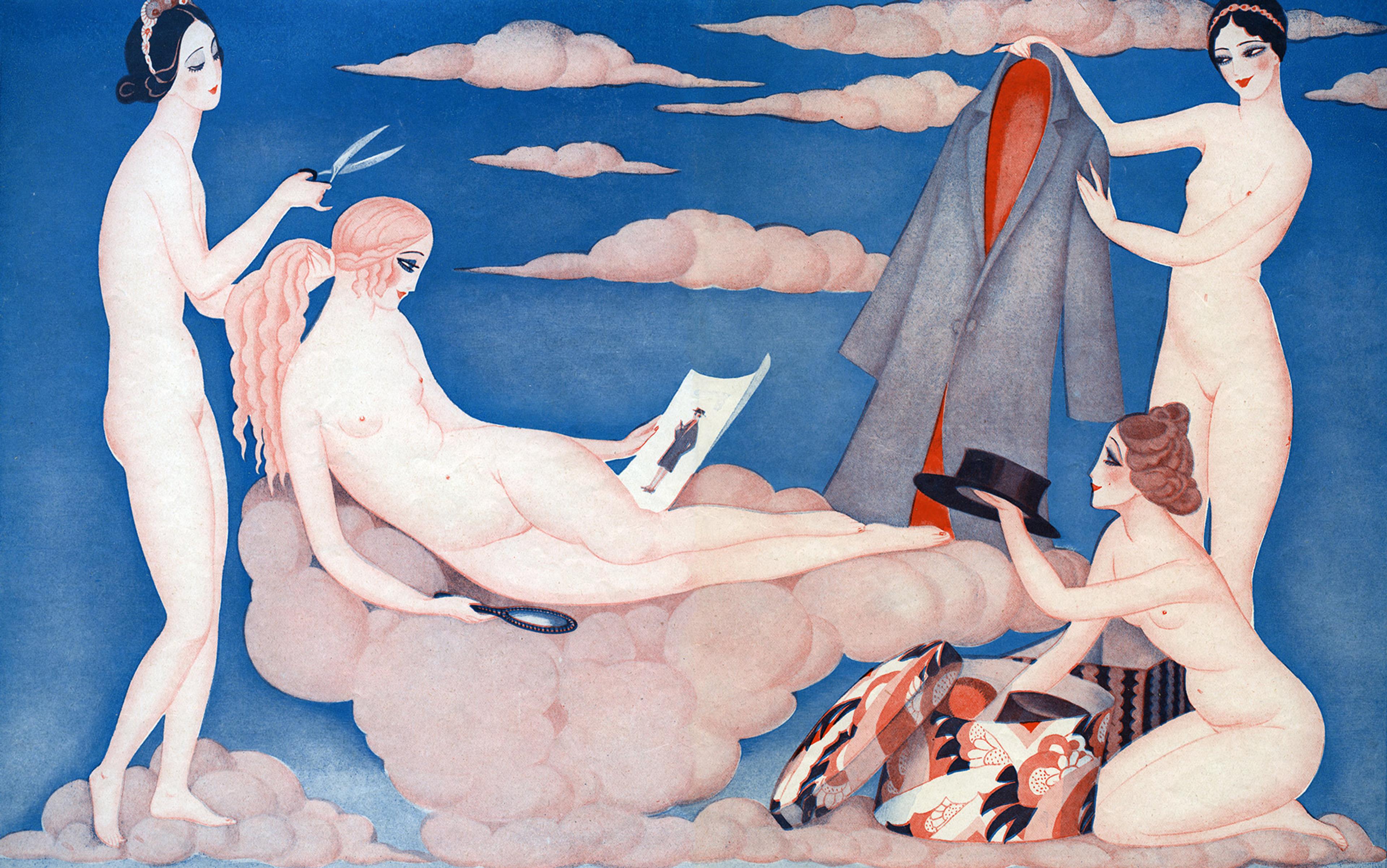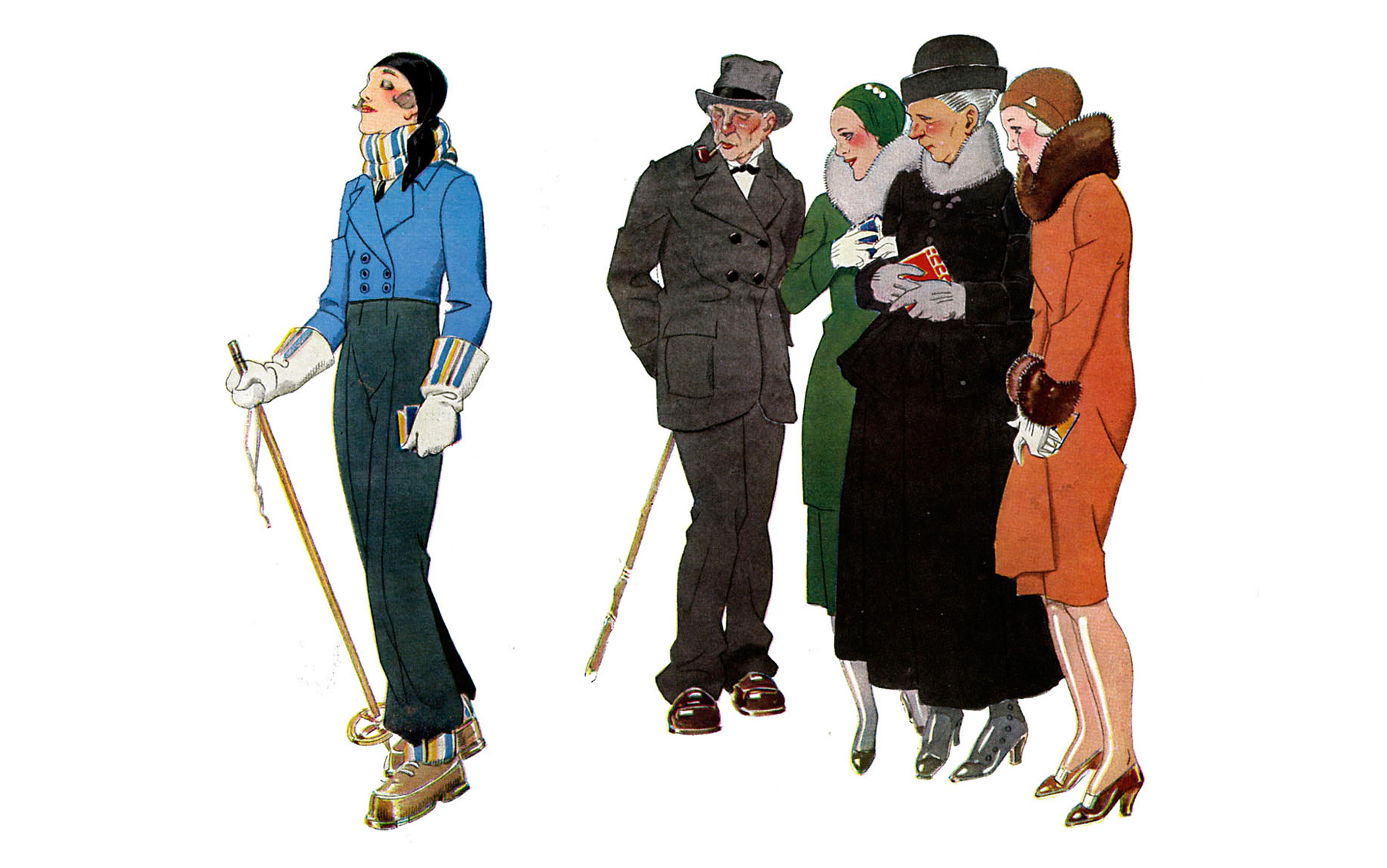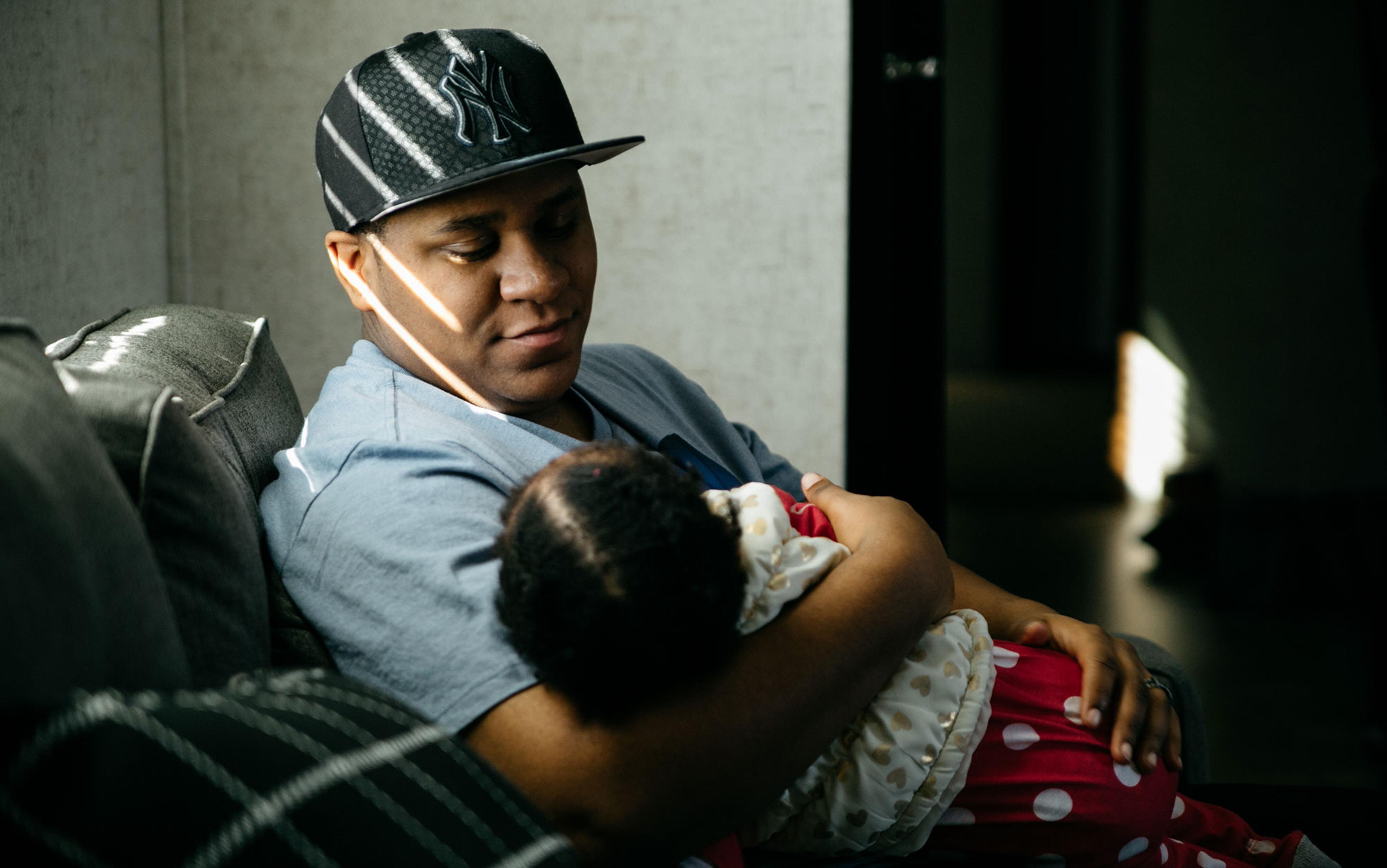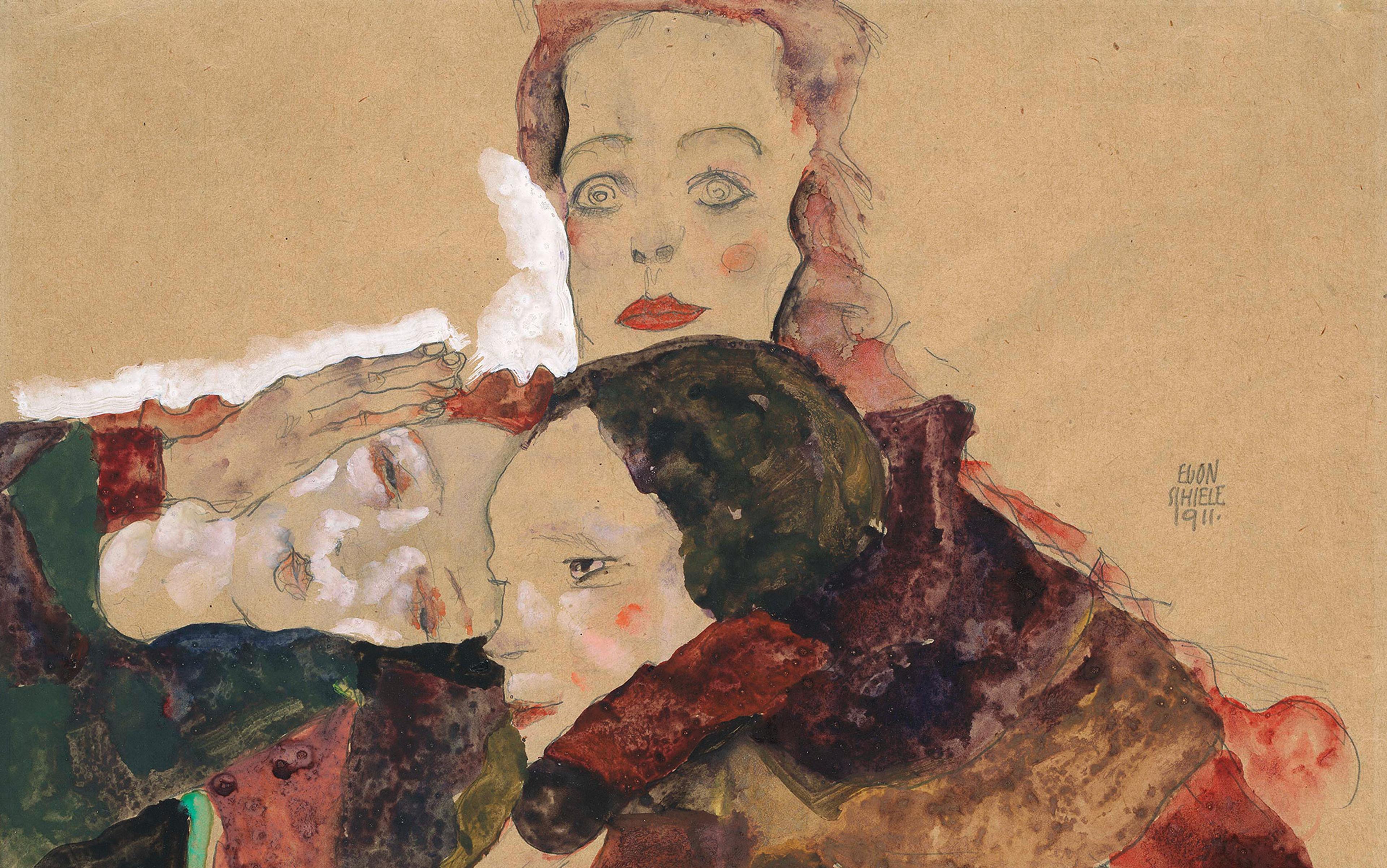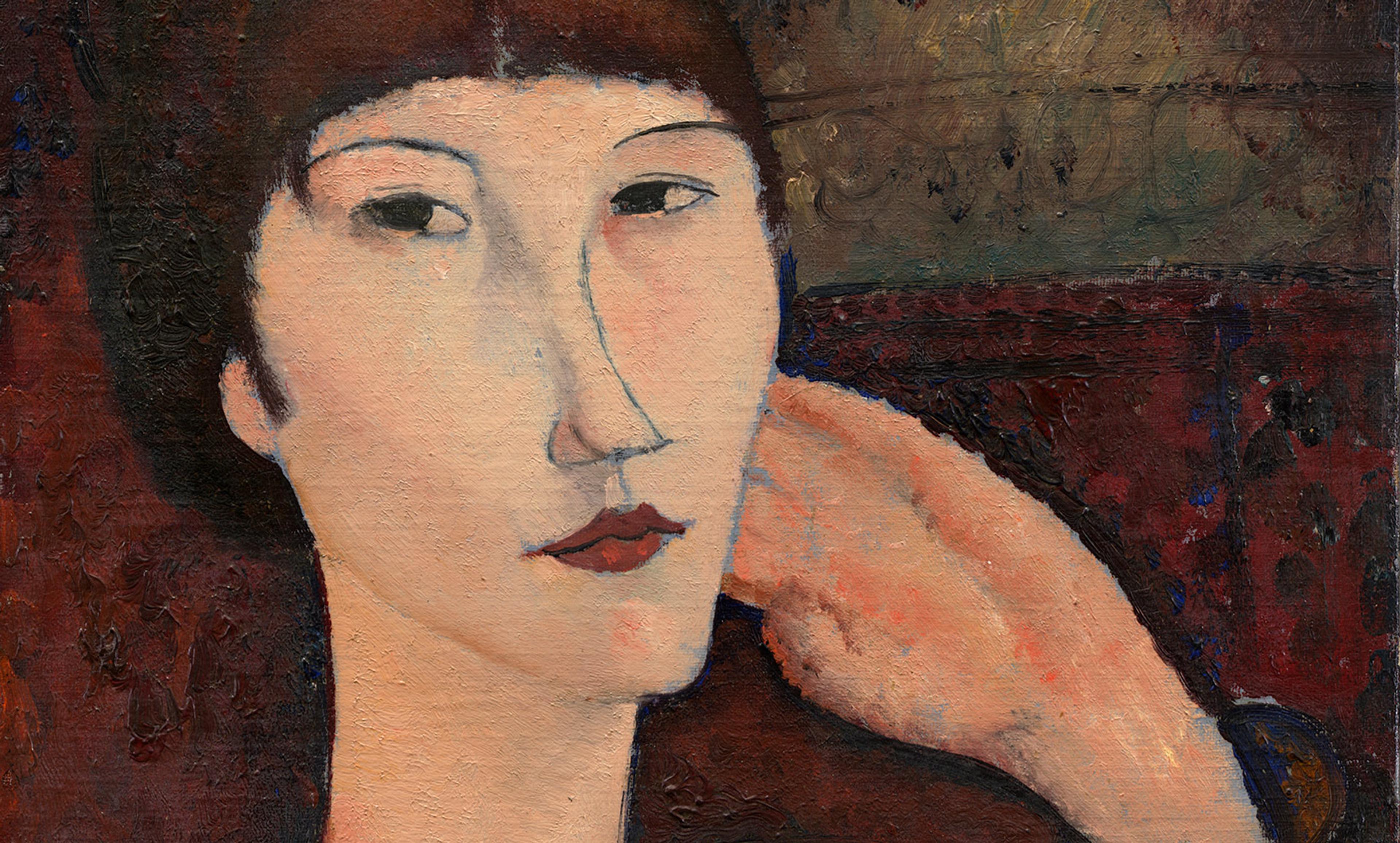What is gender? This is a question that cuts to the very heart of feminist theory and practice, and is pivotal to current debates in social justice activism about class, identity and privilege. In everyday conversation, the word ‘gender’ is a synonym for what would more accurately be referred to as ‘sex’. Perhaps due to a vague squeamishness about uttering a word that also describes sexual intercourse, the word ‘gender’ is now euphemistically used to refer to the biological fact of whether a person is female or male, saving us all the mild embarrassment of having to invoke, however indirectly, the bodily organs and processes that this bifurcation entails.
The word ‘gender’ originally had a purely grammatical meaning in languages that classify their nouns as masculine, feminine or neuter. But since at least the 1960s, the word has taken on another meaning, allowing us to make a distinction between sex and gender. For feminists, this distinction has been important, because it enables us to acknowledge that some of the differences between women and men are traceable to biology, while others have their roots in environment, culture, upbringing and education – what feminists call ‘gendered socialisation’.
At least, that is the role that the word gender traditionally performed in feminist theory. It used to be a basic, fundamental feminist idea that while sex referred to what is biological, and so perhaps in some sense ‘natural’, gender referred to what is socially constructed. On this view, which for simplicity we can call the radical feminist view, gender refers to the externally imposed set of norms that prescribe and proscribe desirable behaviour to individuals in accordance with morally arbitrary characteristics.
Not only are these norms external to the individual and coercively imposed, but they also represent a binary caste system or hierarchy, a value system with two positions: maleness above femaleness, manhood above womanhood, masculinity above femininity. Individuals are born with the potential to perform one of two reproductive roles, determined at birth, or even before, by the external genitals that the infant possesses. From then on, they will be inculcated into one of two classes in the hierarchy: the superior class if their genitals are convex, the inferior one if their genitals are concave.
From birth, and the identification of sex-class membership that happens at that moment, most female people are raised to be passive, submissive, weak and nurturing, while most male people are raised to be active, dominant, strong and aggressive. This value system, and the process of socialising and inculcating individuals into it, is what a radical feminist means by the word ‘gender’. Understood like this, it’s not difficult to see what is objectionable and oppressive about gender, since it constrains the potential of both male and female people alike, and asserts the superiority of males over females. So, for the radical feminist, the aim is to abolish gender altogether: to stop putting people into pink and blue boxes, and to allow the development of individuals’ personalities and preferences without the coercive influence of this socially enacted value system.
This view of the nature of gender sits uneasily with those who experience gender as in some sense internal and innate, rather than as entirely socially constructed and externally imposed. Such people not only dispute that gender is entirely constructed, but also reject the radical feminist analysis that it is inherently hierarchical with two positions. On this view, which for ease I will call the queer feminist view of gender, what makes the operation of gender oppressive is not that it is socially constructed and coercively imposed: rather, the problem is the prevalence of the belief that there are only two genders.
Humans of both sexes would be liberated if we recognised that while gender is indeed an internal, innate, essential facet of our identities, there are more genders than just ‘woman’ or ‘man’ to choose from. And the next step on the path to liberation is the recognition of a new range of gender identities: so we now have people referring to themselves as ‘genderqueer’ or ‘non-binary’ or ‘pangender’ or ‘polygender’ or ‘agender’ or ‘demiboy’ or ‘demigirl’ or ‘neutrois’ or ‘aporagender’ or ‘lunagender’ or ‘quantumgender’… I could go on. An oft-repeated mantra among proponents of this view is that ‘gender is not a binary; it’s a spectrum’. What follows from this view is not that we need to tear down the pink and the blue boxes; rather, we simply need to recognise that there are many more boxes than just these two.
At first blush this seems an appealing idea, but there are numerous problems with it, problems that render it internally incoherent and politically unattractive.
Many proponents of the queer view of gender describe their own gender identity as ‘non-binary’, and present this in opposition to the vast majority of people whose gender identity is presumed to be binary. On the face of it, there seems to be an immediate tension between the claim that gender is not a binary but a spectrum, and the claim that only a small proportion of individuals can be described as having a non-binary gender identity. If gender really is a spectrum, doesn’t this mean that every individual alive is non-binary, by definition? If so, then the label ‘non-binary’ to describe a specific gender identity would become redundant, because it would fail to pick out a special category of people.
To avoid this, the proponent of the spectrum model must in fact be assuming that gender is both a binary and a spectrum. It is entirely possible for a property to be described in both continuous and binary ways. One example is height: clearly height is a continuum, and individuals can fall anywhere along that continuum; but we also have the binary labels Tall and Short. Might gender operate in a similar way?
The thing to notice about the Tall/Short binary is that when these concepts are invoked to refer to people, they are relative or comparative descriptions. Since height is a spectrum or a continuum, no individual is absolutely tall or absolutely short; we are all of us taller than some people and shorter than some others. When we refer to people as tall, what we mean is that they are taller than the average person in some group whose height we are interested in examining. A boy could simultaneously be tall for a six-year-old, and yet short by comparison with all male people. So ascriptions of the binary labels Tall and Short must be comparative, and make reference to the average. Perhaps individuals who cluster around that average might have some claim to refer to themselves as of ‘non-binary height’.
However, it seems unlikely that this interpretation of the spectrum model will satisfy those who describe themselves as non-binary gendered. If gender, like height, is to be understood as comparative or relative, this would fly in the face of the insistence that individuals are the sole arbiters of their gender. Your gender would be defined by reference to the distribution of gender identities present in the group in which you find yourself, and not by your own individual self-determination. It would thus not be up to me to decide that I am non-binary. This could be determined only by comparing my gender identity to the spread of other people’s, and seeing where I fall. And although I might think of myself as a woman, someone else might be further down the spectrum towards womanhood than I am, and thus ‘more of a woman’ than me.
Further, when we observe the analogy with height we can see that, when observing the entire population, only a small minority of people would be accurately described as Tall or Short. Given that height really is a spectrum, and the binary labels are ascribed comparatively, only the handful of people at either end of the spectrum can be meaningfully labelled Tall or Short. The rest of us, falling along all the points in between, are the non-binary height people, and we are typical. In fact, it is the binary Tall and Short people who are rare and unusual. And if we extend the analogy to gender, we see that being non-binary gendered is actually the norm, not the exception.
to call oneself non-binary is in fact to create a new false binary
If gender is a spectrum, that means it’s a continuum between two extremes, and everyone is located somewhere along that continuum. I assume the two ends of the spectrum are masculinity and femininity. Is there anything else that they could possibly be? Once we realise this, it becomes clear that everybody is non-binary, because absolutely nobody is pure masculinity or pure femininity. Of course, some people will be closer to one end of the spectrum, while others will be more ambiguous and float around the centre. But even the most conventionally feminine person will demonstrate some characteristics that we associate with masculinity, and vice versa.
I would be happy with this implication, because despite possessing female biology and calling myself a woman, I do not consider myself a two-dimensional gender stereotype. I am not an ideal manifestation of the essence of womanhood, and so I am non-binary. Just like everybody else. However, those who describe themselves as non-binary are unlikely to be satisfied with this conclusion, as their identity as ‘non-binary person’ depends upon the existence of a much larger group of so-called binary ‘cisgender’ people, people who are incapable of being outside the arbitrary masculine/feminine genders dictated by society.
And here we have an irony about some people insisting that they and a handful of their fellow gender revolutionaries are non-binary: in doing so, they create a false binary between those who conform to the gender norms associated with their sex, and those who do not. In reality, everybody is non-binary. We all actively participate in some gender norms, passively acquiesce with others, and positively rail against others still. So to call oneself non-binary is in fact to create a new false binary. It also often seems to involve, at least implicitly, placing oneself on the more complex and interesting side of that binary, enabling the non-binary person to claim to be both misunderstood and politically oppressed by the binary cisgender people.
If you identify as pangender, is the claim that you represent every possible point on the spectrum? All at the same time? How might that be possible, given that the extremes necessarily represent incompatible opposites of one another? Pure femininity is passivity, weakness and submission, while pure masculinity is aggression, strength and dominance. It is simply impossible to be all of these things at the same time. If you disagree with these definitions of masculinity and femininity, and do not accept that masculinity should be defined in terms of dominance while femininity should be described in terms of submission, you are welcome to propose other definitions. But whatever you come up with, they are going to represent opposites of one another.
A handful of individuals are apparently permitted to opt out of the spectrum altogether by declaring themselves ‘agender’, saying that they feel neither masculine nor feminine, and don’t have any internal experience of gender. We are not given any explanation as to why some people are able to refuse to define their personality in gendered terms while others are not, but one thing that is clear about the self-designation as ‘agender’: we cannot all do it, for the same reasons we cannot all call ourselves non-binary. If we were all to deny that we have an innate, essential gender identity, then the label ‘agender’ would become redundant, as lacking in gender would be a universal trait. Agender can be defined only against gender. Those who define themselves and their identity by their lack of gender must therefore be committed to the view that most people do have an innate, essential gender but that, for some reason, they do not.
Once we assert that the problem with gender is that we currently recognise only two of them, the obvious question to ask is: how many genders would we have to recognise in order not to be oppressive? Just how many possible gender identities are there?
The only consistent answer to this is: 7 billion, give or take. There are as many possible gender identities as there are humans on the planet. According to Nonbinary.org, one of the main internet reference sites for information about non-binary genders, your gender can be frost or the Sun or music or the sea or Jupiter or pure darkness. Your gender can be pizza.
But if this is so, it’s not clear how it makes sense or adds anything to our understanding to call any of this stuff ‘gender’, as opposed to just ‘human personality’ or ‘stuff I like’. The word gender is not just a fancy word for your personality or your tastes or preferences. It is not just a label to adopt so that you now have a unique way to describe just how large and multitudinous and interesting you are. Gender is the value system that ties desirable (and sometimes undesirable?) behaviours and characteristics to reproductive function. Once we’ve decoupled those behaviours and characteristics from reproductive function – which we should – and once we’ve rejected the idea that there are just two types of personality and that one is superior to the other – which we should – what can it possibly mean to continue to call this stuff ‘gender’? What meaning does the word ‘gender’ have here, that the word ‘personality’ cannot capture?
On Nonbinary.org, your gender can apparently be:
(Name)gender: ‘A gender that is best described by one’s name, good for those who aren’t sure what they identify as yet but definitely know that they aren’t cis … it can be used as a catch-all term or a specific identifier, eg, johngender, janegender, (your name here)gender, etc.’
The example of ‘(name)gender’ perfectly demonstrates how non-binary gender identities operate, and the function they perform. They are for people who aren’t sure what they identify as, but know that they aren’t cisgender. Presumably because they are far too interesting and revolutionary and transgressive for something as ordinary and conventional as cis.
The solution is not to try to slip through the bars of the cage while leaving the rest of the cage intact, and the rest of womankind trapped within it
This desire not to be cis is rational and makes perfect sense, especially if you are female. I too believe my thoughts, feelings, aptitudes and dispositions are far too interesting, well-rounded and complex to simply be a ‘cis woman’. I, too, would like to transcend socially constructed stereotypes about my female body and the assumptions others make about me as a result of it. I, too, would like to be seen as more than just a mother/domestic servant/object of sexual gratification. I, too, would like to be viewed as a human being, a person with a rich and deep inner life of my own, with the potential to be more than what our society currently views as possible for women.
The solution to that, however, is not to call myself agender, to try to slip through the bars of the cage while leaving the rest of the cage intact, and the rest of womankind trapped within it. This is especially so given that you can’t slip through the bars. No amount of calling myself ‘agender’ will stop the world seeing me as a woman, and treating me accordingly. I can introduce myself as agender and insist upon my own set of neo-pronouns when I apply for a job, but it won’t stop the interviewer seeing a potential baby-maker, and giving the position to the less qualified but less encumbered by reproduction male candidate.
Here we arrive at the crucial tension at the heart of gender identity politics, and one that most of its proponents either haven’t noticed, or choose to ignore because it can only be resolved by rejecting some of the key tenets of the doctrine.
Many people justifiably assume that the word ‘transgender’ is synonymous with ‘transsexual’, and means something like: having dysphoria and distress about your sexed body, and having a desire to alter that body to make it more closely resemble the body of the opposite sex. But according to the current terminology of gender identity politics, being transgender has nothing to do with a desire to change your sexed body. What it means to be transgender is that your innate gender identity does not match the gender you were assigned at birth. This might be the case even if you are perfectly happy and content in the body you possess. You are transgender simply if you identify as one gender, but socially have been perceived as another.
It is a key tenet of the doctrine that the vast majority of people can be described as ‘cisgender’, which means that our innate gender identity matches the one we were assigned at birth. But as we have seen, if gender identity is a spectrum, then we are all non-binary, because none of us inhabits the points represented by the ends of that spectrum. Every single one of us will exist at some unique point along that spectrum, determined by the individual and idiosyncratic nature of our own particular identity, and our own subjective experience of gender. Given that, it’s not clear how anybody ever could be cisgender. None of us was assigned our correct gender identity at birth, for how could we possibly have been? At the moment of my birth, how could anyone have known that I would later go on to discover that my gender identity is ‘frostgender’, a gender which is apparently ‘very cold and snowy’?
Once we recognise that the number of gender identities is potentially infinite, we are forced to concede that nobody is deep down cisgender, because nobody is assigned the correct gender identity at birth. In fact, none of us was assigned a gender identity at birth at all. We were placed into one of two sex classes on the basis of our potential reproductive function, determined by our external genitals. We were then raised in accordance with the socially prescribed gender norms for people of that sex. We are all educated and inculcated into one of two roles, long before we are able to express our beliefs about our innate gender identity, or to determine for ourselves the precise point at which we fall on the gender continuum. So defining transgender people as those who at birth were not assigned the correct place on the gender spectrum has the implication that every single one of us is transgender; there are no cisgender people.
The logical conclusion of all this is: if gender is a spectrum, not a binary, then everyone is trans. Or alternatively, there are no trans people. Either way, this a profoundly unsatisfactory conclusion, and one that serves both to obscure the reality of female oppression, as well as to erase and invalidate the experiences of transsexual people.
The way to avoid this conclusion is to realise that gender is not a spectrum. It’s not a spectrum, because it’s not an innate, internal essence or property. Gender is not a fact about persons that we must take as fixed and essential, and then build our social institutions around that fact. Gender is socially constructed all the way through, an externally imposed hierarchy, with two classes, occupying two value positions: male over female, man over woman, masculinity over femininity.
The truth of the spectrum analogy lies in the fact that conformity to one’s place in the hierarchy, and to the roles it assigns to people, will vary from person to person. Some people will find it relatively easier and more painless to conform to the gender norms associated with their sex, while others find the gender roles associated with their sex so oppressive and limiting that they cannot tolerably live under them, and choose to transition to live in accordance with the opposite gender role.
Gender as a hierarchy perpetuates the subordination of female people to male people, and constrains the development of both sexes
Fortunately, what is a spectrum is human personality, in all its variety and complexity. (Actually that’s not a single spectrum either, because it is not simply one continuum between two extremes. It’s more like a big ball of wibbly-wobbly, humany-wumany stuff.) Gender is the value system that says there are two types of personality, determined by the reproductive organs you were born with. One of the first steps to liberating people from the cage that is gender is to challenge established gender norms, and to play with and explore your gender expression and presentation. Nobody, and certainly no radical feminist, wants to stop anyone from defining themselves in ways that make sense to them, or from expressing their personality in ways they find enjoyable and liberating.
So if you want to call yourself a genderqueer femme presenting demigirl, you go for it. Express that identity however you like. Have fun with it. A problem emerges only when you start making political claims on the basis of that label – when you start demanding that others call themselves cisgender, because you require there to be a bunch of conventional binary cis people for you to define yourself against; and when you insist that these cis people have structural advantage and political privilege over you, because they are socially read as the conformist binary people, while nobody really understands just how complex and luminous and multifaceted and unique your gender identity is. To call yourself non-binary or genderfluid while demanding that others call themselves cisgender is to insist that the vast majority of humans must stay in their boxes, because you identify as boxless.
The solution is not to reify gender by insisting on ever more gender categories that define the complexity of human personality in rigid and essentialist ways. The solution is to abolish gender altogether. We do not need gender. We would be better off without it. Gender as a hierarchy with two positions operates to naturalise and perpetuate the subordination of female people to male people, and constrains the development of individuals of both sexes. Reconceiving of gender as an identity spectrum represents no improvement.
You do not need to have a deep, internal, essential experience of gender to be free to dress how you like, behave how you like, work how you like, love who you like. You do not need to show that your personality is feminine for it to be acceptable for you to enjoy cosmetics, cookery and crafting. You do not need to be genderqueer to queer gender. The solution to an oppressive system that puts people into pink and blue boxes is not to create more and more boxes that are any colour but blue or pink. The solution is to tear down the boxes altogether.
